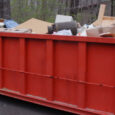The landfill: characteristics and inventory
In Sugar Land, landfill is the ultimate outcome for over 90% of collected waste. The techniques of incineration, composting, anaerobic digestion, etc., have sometimes been used without meeting long-term needs, particularly in terms of the sustainability of the techniques used and the funding required.
Some cities in Texas, even capitals with more than one million inhabitants, recently had, or still have, only small landfills or dumps, and this, while the size of populations implies gigantic quantities of waste. For example, a city of one million inhabitants, with a production average per inhabitant of 200 kg / year (minimalist assumption), must be able to manage nearly 550 tonnes of waste per day.
The inconsistencies observed may arise from various practices such as the regular burning of waste (in town or on the discharge) or those we described previously. Other cities, on the other hand, have more focused management of waste. This is the case of Houston, Dallas, etc., which have one to three landfill sites per city. Some, initially located on the outskirts of the city, soon found themselves encompassed in the expanding urban areas galloping.
Other sites are far enough away from urban areas but problems of transporting waste to the landfill can also arise and sometimes not insignificant leakage flows appear. It should also be remembered that, due to lack of adequate technical and financial resources, the regular collection of waste of these cities never covers the entire production.
The impact on human health and the environment of the landfills we have visited in different regions of Texas is very variable. It is often linked to climatic conditions. Nevertheless, some practices can have a significant impact. Let us quote for example the update waste fire which produces noxious fumes and releases toxic elements from batteries, cells, etc.
Another example is the presence of hospital waste in household waste, a potential source of serious illnesses such as hepatitis or serious infections for ragpickers and recyclers who walk on the waste bare feet or too little protected.
Overall, a large number of these landfills are located in unfavorable areas. However, even if they are closed or in the process of being closed, waste they contain will not disappear and will continue to have an impact insidious on public health and the environment. It is for this reason that the state of Texas is in the process of building an atlas of landfills in all counties. It collects, in the form of an inventory, the identity cards of the landfills.
The atlas thus offers a memorization of the position of the different discharges (more than 300,000 tonnes) of the cities concerned with their characteristics relating to the nature of the subsoil, the presence of water tables, the types of waste, treatments carried out (covering, firing, compaction, drainage, etc.), in the presence of biogas (gaseous discharges) and leachate (liquid discharges) and, if possible, their composition.
Memorization is important for the future, that is to say for the management nuisances that have occurred or will occur in the future more or less close (a few years to a few centuries). The atlas is made from a explanatory form, easy to complete, and it also contains a whole series of brief theoretical reminders on waste management. It is disseminated in the form a CD-Rom and is accessible to everyone via the internet.





